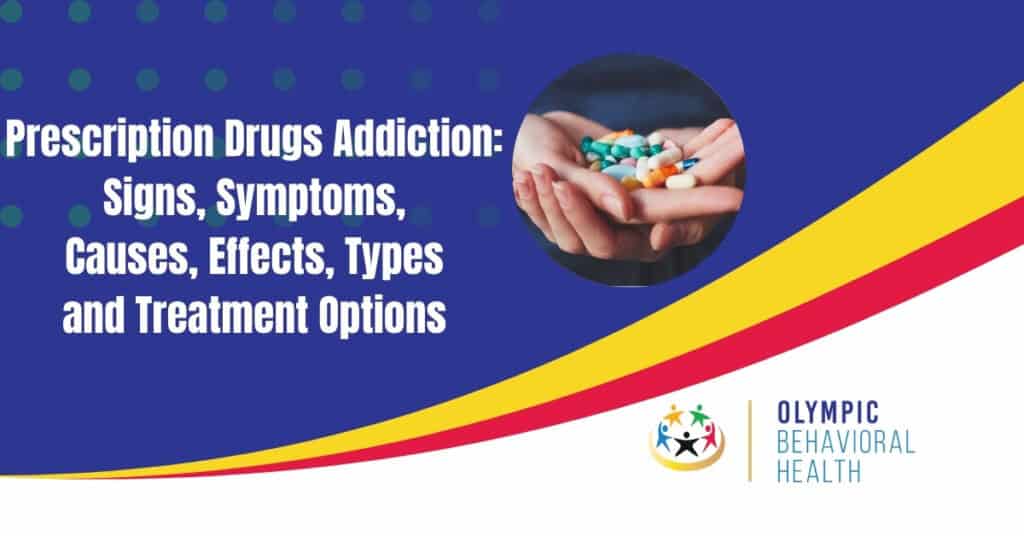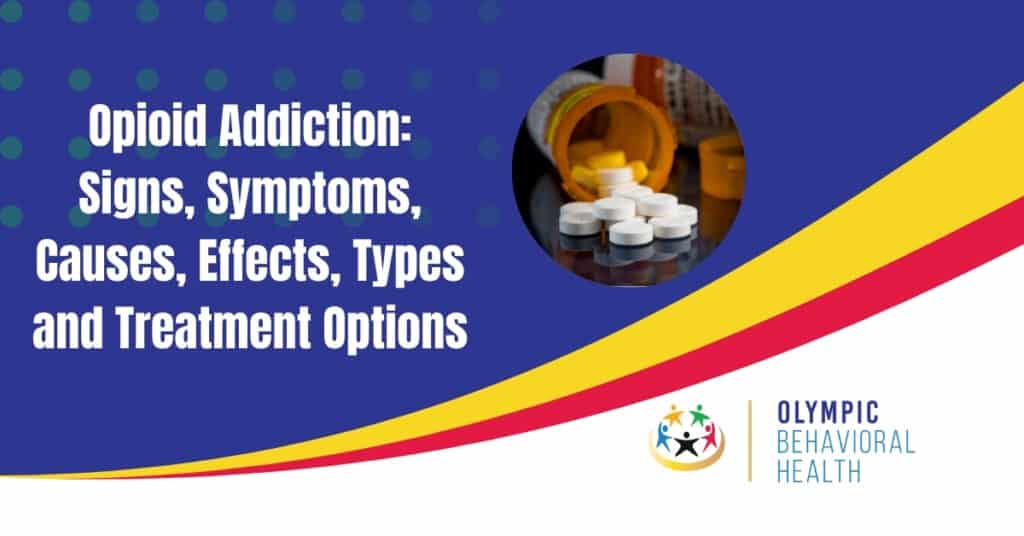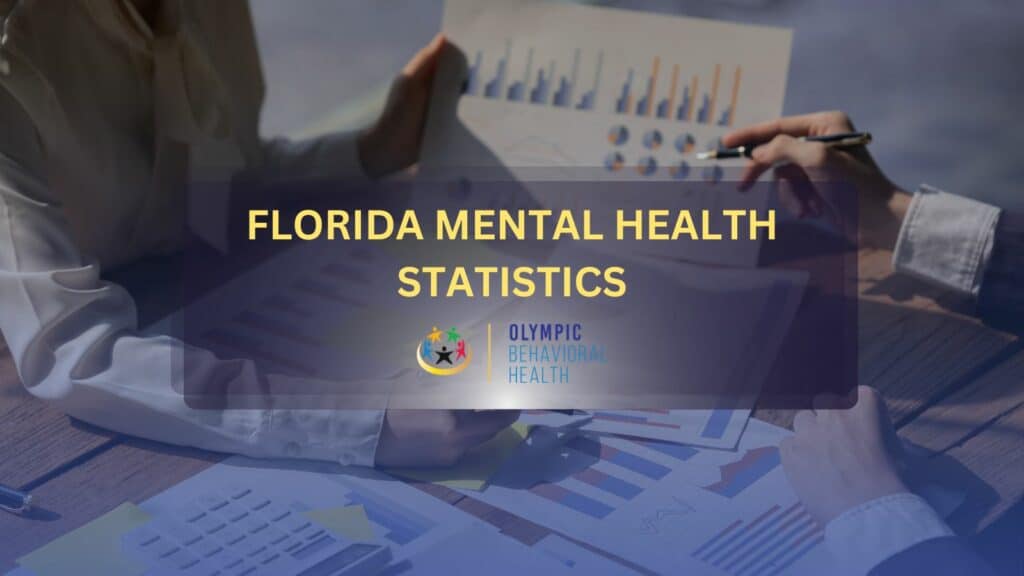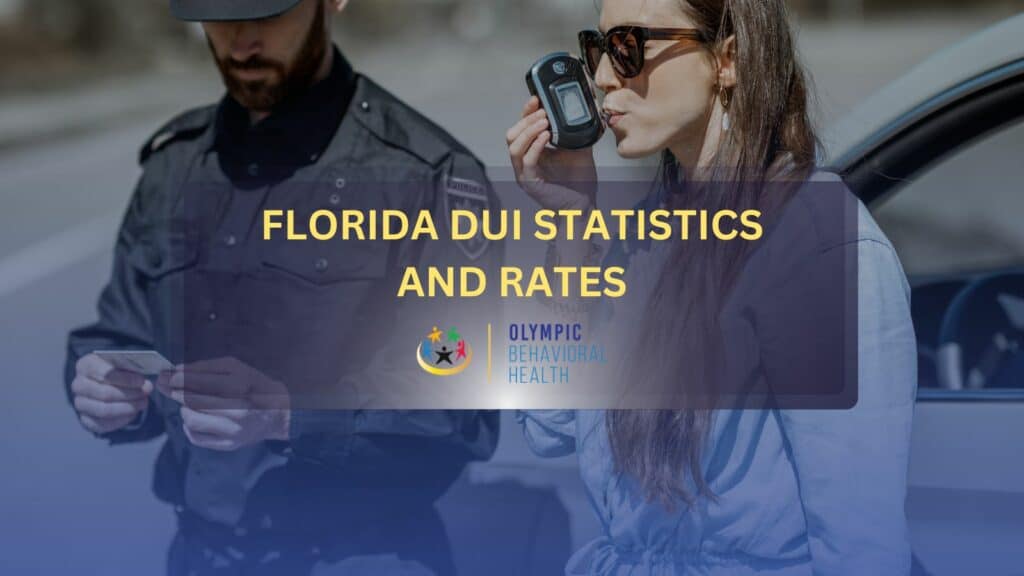Prescription drug addiction happens more often compared to addiction to illicit drugs.
Prescription drug addiction, also known as prescription drug use disorder, occurs when individuals develop a dependency on medications that were initially prescribed for legitimate medical reasons.
Prescription drug abuse symptoms include drowsiness, confusion, constipation, respiratory depression, and pinpoint pupils. Additional symptoms are mood swings, anxiety, depression, irritability, and heightened aggression.
Prescription drug addiction can occur due to legitimately medically prescribed drugs developing dependency, or genetic, environmental, and psychological factors.
Prescription drug addiction develops due to tolerance, psychological dependence, availability of the drug, and social or environmental factors.
Common types of prescription drug addiction include opioid addiction, stimulant addiction, and sedative addiction.
Prescription drug addiction poses various risks to users such as health complications, dependency, withdrawal problems, socioeconomic problems, and overdose.
Preventing prescription drug addiction involves education, responsible prescribing, monitoring, and patient involvement.
Prescription drugs that cause addiction are benzodiazepines, opioids, stimulants, and sedatives.
Prescription drug addicts experience withdrawal effects such as anxiety, restlessness, sweating, tremors, insomnia, nausea, and seizures.
Prescription drug addiction treatment involves medical, psychological, and social interventions. These include medical evaluation, detoxification, medication-assisted treatment, psychotherapy, social support, and creating awareness.
To prevent prescription drug relapse, follow a treatment plan strictly, build a social support network, practice self-care, stay away from triggers, and monitor your mental health.
Can You Become Addicted to Prescription Drugs?
Yes, it is possible to become addicted to prescription drugs. According to a 2014 report by Harvard Medical School titled Addiction to Prescription Drugs, contrary to what most people think, prescription drug addiction is more common compared to illicit drugs such as cocaine or heroin.
Commonly abused prescription drugs include opioids (such as oxycodone and hydrocodone), sedatives (such as benzodiazepines like Xanax and Valium), and stimulants (such as amphetamines and methylphenidate).
These medications are highly addictive, particularly when used for long periods, in higher doses than prescribed, or for reasons other than their intended medical purpose. Addiction develops as individuals begin to rely on drugs to cope with emotional or physical pain, leading to a cycle of dependency.
What is Prescription Drug addiction?
Prescription drug addiction, also known as prescription drug abuse or dependency is a problem that affects millions of people worldwide. It occurs when an individual uses prescription medications in a way that is not recommended by a medical professional or for non-medical reasons. This can lead to physical and psychological dependence on the drugs, as well as negative health and social consequences.
What Are the Signs and Symptoms of a Prescription Drug Addiction?
Prescription drug addiction presents with physical and psychological symptoms.
Physical
- Opioid use symptoms include drowsiness, confusion, constipation, respiratory depression, and pinpoint pupils.
- Stimulant abuse causes increased heart rate, high blood pressure, restlessness, anxiety, and insomnia.
- Depressant abuse leads to dizziness, impaired coordination, slurred speech, and sedation.
- Long-term abuse of any prescription drug can cause organ damage, such as liver or kidney damage, and can increase the risk of overdose and death.
Psychological
- Behavioral Changes: Individuals exhibit changes in their behavior, such as neglecting responsibilities, isolating themselves from others, or engaging in risky activities.
- Cravings: Strong urges to use the drug, often accompanied by an inability to control or stop its use.
- Tolerance: The abuser needs increasing doses of the drug to achieve the desired effect, indicating that the body is becoming tolerant to the medication.
- Withdrawal Symptoms: Physical or emotional symptoms that occur when the drug use is reduced or stopped, such as anxiety, irritability, nausea, sweating, or tremors.
What Causes a Prescription Drug Addiction?
Prescription drug addiction occurs due to genetic, environmental, or psychological factors. Addiction also occurs when legitimately prescribed medication is habit-forming or when people start using medical drugs for recreational purposes.
Medical Prescriptions: Individuals with legitimately prescribed drugs for medical reasons, such as pain management or anxiety. However, over time, they become dependent on the drug.
Genetic Factors: Genetics play a role in an individual’s susceptibility to addiction. Those with a family history of addiction are more likely to develop a dependency on prescription drugs.
Psychological Factors: Individuals with underlying mental health conditions, such as depression or anxiety, are prone to developing addiction as they use drugs to self-medicate.
Environmental Influences: Social and environmental factors, such as peer pressure or easy access to prescription drugs contribute to the development of addiction.
Recreational Use: Some individuals begin using prescription drugs recreationally, leading to dependence and addiction over time.
How Does a Prescription Drug Addiction Develop?
Prescription drug addiction develops due to tolerance, psychological dependence, availability of the drug, and social or environmental factors.
Prescription drug addiction develops through a variety of factors. Most of the time, it starts with legitimate medical use. Initially, individuals are prescribed medication for specific health issues such as pain, anxiety, or sleep disorders. When taken as prescribed, these medications are safe and effective. However, dependency arises when individuals begin to misuse the medication by taking larger doses or using it more frequently than recommended.
Factors contributing to the development of addiction include:
Tolerance: Over time, the body requires higher doses of the drug to achieve the same effects, leading individuals to increase their intake.
Psychological Dependence: People begin to rely on the medication for emotional comfort, stress relief, or as a coping mechanism, rather than for its intended medical purpose.
Physical Dependence: Continued use leads to the body adapting to the presence of the drug, resulting in withdrawal symptoms if the medication is reduced or stopped.
Availability: The ease of access to prescription drugs, whether through medical sources or illicit channels, facilitates misuse.
Social and Environmental Factors: Peer influence, familial attitudes, and societal acceptance of prescription drug use play a role in the development of addiction.

What Are The Different Types of Prescription Drug Addiction?
Common types of prescription drug addiction include opioid addiction, stimulant addiction, and sedative addiction.
Opioid Addiction: This is one of the most significant prescription drug addiction issues. Opioids, such as oxycodone, hydrocodone, and morphine, are prescribed for pain relief but carry the risk of physical and psychological dependence. Misuse results in addiction and severe withdrawal symptoms.
Stimulant Addiction: Stimulants, such as amphetamines and methylphenidate, are often prescribed for conditions like ADHD or narcolepsy. These drugs cause a high and lead to addiction due to their effects on the brain’s reward system.
Sedative or Tranquilizer Addiction: Benzodiazepines and barbiturates are prescribed for anxiety or sleep disorders. Prolonged use results in tolerance, dependence, and addiction, leading to withdrawal symptoms upon cessation.
Antidepressant or Antipsychotic Addiction: While these drugs are not typically associated with addiction, some individuals abuse them for their mood-altering effects. Misuse leads to dependency and other health issues.
What Are the Risks of Prescription Drug Addiction?
Prescription drug addiction poses a range of significant risks to individuals such as health complications, dependency, and withdrawal problems, socioeconomic problems, and overdose.
Health Risks: The misuse of prescription drugs leads to a range of health issues, including respiratory depression, organ damage (particularly liver and kidney damage), cardiovascular problems, and neurological impairments. It also exacerbates mental health conditions and contributes to mood disorders such as depression and anxiety.
Dependency and Withdrawal: Regular misuse of prescription drugs results in physical and psychological dependence. When an individual stops taking the drug, they experience severe withdrawal symptoms such as nausea, anxiety, insomnia, and seizures.
Social and Economic Impact: Prescription drug addiction leads to strained relationships, job loss, financial difficulties, and legal problems. It also puts a strain on healthcare resources and contributes to broader public health issues.
Risk of Polysubstance Abuse: Individuals who misuse prescription drugs are more likely to abuse other substances, such as alcohol or illicit drugs, which increase the risk of harmful interactions and further health complications.
Can You Overdose on Prescription Drugs?
Prescription drug overdose is a major risk, especially when drugs are taken in large quantities or combined with other substances such as alcohol or other medications. Opioids, sedatives, and stimulants are common prescription drugs that lead to overdose which pose life-threatening risks unless the user gets quick medical attention.
How Can You Prevent a Prescription Drug Addiction?
Preventing prescription drug addiction requires a multifaceted approach involving education, responsible prescribing, monitoring, and patient involvement.
Education: Both healthcare providers and patients should be educated about the risks and signs of prescription drug addiction. Patients should understand the potential side effects and risks of dependency associated with their medications and know how to use them properly.
Responsible Prescribing: Healthcare providers should follow best practices for prescribing medications, particularly opioids and other potentially addictive drugs. This includes prescribing the lowest effective dose for the shortest duration necessary and exploring non-pharmacological treatments when possible.
Monitoring and Follow-Up: Physicians need to monitor their patients’ use of prescribed medications and follow up regularly to assess the efficacy of the treatment and the potential for abuse. Prescription Drug Monitoring Programs (PDMPs) help track patients’ medication use and prevent “doctor shopping.”
Secure Storage and Disposal: Patients should store prescription drugs in a secure place to prevent unauthorized access by others, including children and visitors. Proper disposal of unused or expired medications through take-back programs or designated disposal sites helps reduce the risk of diversion and misuse.
Patient Involvement: Patients should take an active role in their healthcare, including discussing treatment options with their healthcare provider and asking questions about the risks and benefits of prescribed medications. This leads to more informed decisions and potentially safer treatment choices.
Support and Treatment: If a patient or their family notices signs of addiction, they should seek help from a healthcare provider immediately. Early intervention and treatment help to prevent the progression of addiction and its associated harm
What Types Of Prescription Drugs Cause Addiction?
Prescription drugs that cause addiction are benzodiazepines, opioids, stimulants, and sedatives.
Benzodiazepine
Examples of benzodiazepines include Diazepam (Valium), alprazolam (Xanax), lorazepam (Ativan).
Uses: Anxiety, insomnia, seizures, muscle spasms.
Addictive Potential: Benzodiazepines enhance the effects of gamma-aminobutyric acid (GABA), a neurotransmitter that helps calm the nervous system. The calming and sedative effects lead to psychological and physical dependency, making it difficult for patients to stop using them
Opioids
Drug examples: Oxycodone (Oxycontin), hydrocodone (Vicodin), codeine, morphine, and fentanyl.
Uses: These drugs are prescribed for moderate to severe pain.
Addictive Potential: Opioids interact with opioid receptors in the brain and body, producing pain relief and euphoria. These effects lead to dependency, as the brain may reduce its natural production of endorphins, increasing tolerance and causing withdrawal symptoms upon discontinuation.
Stimulants
Drugs such as amphetamine (Adderall) and methylphenidate (Ritalin) are prescribed for attention deficit hyperactivity disorder (ADHD). They are addictive and easily abused for their energizing effects.
Drug examples: Methylphenidate (Ritalin), and amphetamine (Adderall).
Uses: They are prescribed for attention deficit hyperactivity disorder (ADHD), and narcolepsy.
Addictive Potential: Stimulants increase levels of dopamine and norepinephrine in the brain, enhancing focus and alertness. The resulting euphoric effects lead to dependency, as the brain adapts to the presence of the drugs, making it harder for patients to stop using them.
Sleeping Pills
Prescription sleep aids such as zolpidem (Ambien) lead to dependency and tolerance, especially if taken in higher doses or for extended periods.

What Are the Withdrawal Effects of a Prescription Drug Addiction?
Users addicted to prescription drugs experience withdrawal effects such as anxiety, restlessness, sweating, tremors, insomnia, nausea, and seizures. These effects are determined by the type of drug and the individual’s level of dependence. Withdrawal symptoms are uncomfortable and, in some cases, life-threatening.
Opioids: Opioids include medications like oxycodone, hydrocodone, codeine, and fentanyl. Withdrawal symptoms from opioids begin as soon as a few hours after the last dose, especially in individuals with a high level of dependence. Symptoms include:
- Anxiety, restlessness, and agitation
- Muscle aches and pains
- Insomnia
- Sweating and chills
- Nausea, vomiting, and diarrhea
- Abdominal cramps
- Increased heart rate and blood pressure
- Intense cravings for the drug
Opioid withdrawal effects are particularly uncomfortable and normally last for several days to weeks.
Benzodiazepines: Medications in this class include diazepam (Valium), alprazolam (Xanax), and lorazepam (Ativan). Withdrawal from benzodiazepines include:
- Anxiety and panic attacks
- Insomnia and restlessness
- Tremors and muscle spasms
- Seizures (especially in cases of sudden cessation)
- Headache
- Irritability
- Nausea and vomiting
- Visual disturbances
Withdrawal symptoms from benzodiazepines medical management, and supervision to prevent severe symptoms such as seizures.
Stimulants: Stimulants like amphetamines and methylphenidate (Ritalin, Adderall) are used to treat conditions like ADHD and narcolepsy. Withdrawal from stimulants causes symptoms such as:
- Fatigue and lethargy
- Depression and irritability
- Increased appetite
- Vivid dreams and insomnia
- Difficulty concentrating
- Stimulant withdrawal is generally less severe than withdrawal from opioids or benzodiazepines but can still be distressing.
Sedatives and Hypnotics: Sedative-hypnotic medications like zolpidem (Ambien) and other sleep aids also cause withdrawal symptoms when discontinued. These include:
- Rebound insomnia
- Anxiety and irritability
- Sweating
- Tremors
- Nausea and vomiting
- Seizures (in severe cases)
Withdrawal from sedatives and hypnotics should be managed carefully, especially if the individual has been taking them for a long time or at high doses.
How Do You Treat a Prescription Drug Addiction?
Treating a prescription drug addiction involves a comprehensive approach involving medical, psychological, and social interventions. These include medical evaluation, detoxification, medication-assisted treatment, psychotherapy, social support, and creating awareness, [NIDA,2023].
Assessment and Evaluation: The first step is a thorough assessment by a healthcare professional to understand the extent of the addiction and the individual’s medical history. This helps in formulating a personalized treatment plan.
Medical Detoxification: In some instances due to the severity of the addiction, medical detoxification is necessary to safely manage withdrawal symptoms. This process should be supervised by medical professionals to ensure safety and comfort.
Medication-Assisted Treatment (MAT): For some types of prescription drug addiction (e.g., opioids), medications such as methadone, buprenorphine, or naltrexone are prescribed to help manage cravings and withdrawal symptoms. These medications aid in recovery and reduce the risk of relapse.
Psychological Counseling and Therapy: Therapy is a crucial component of addiction treatment. Cognitive-behavioral therapy (CBT) and other evidence-based approaches help individuals identify triggers, develop coping strategies, and address underlying psychological issues that contribute to addiction.
Support Groups: Participating in support groups such as Narcotics Anonymous (NA) or other addiction support groups provide a sense of community and peer support, which is invaluable during recovery.
Education and Counseling: Educating the individual about the dangers of prescription drug abuse and providing counseling on lifestyle changes helps to prevent relapse.
Aftercare and Ongoing Support: Addiction recovery is an ongoing process, and aftercare is essential to maintain sobriety. This includes continued therapy, support group participation, and regular follow-up with healthcare providers.
Addressing Co-occurring Disorders: If the individual has co-occurring mental health disorders, such as depression or anxiety, these should be treated concurrently to improve outcomes.
Can You Treat Prescription Drug Addiction Yourself?
It is possible to treat prescription drug addiction at home, but it is important to do so with care and under medical supervision. Many prescription medications are used to treat chronic conditions or specific illnesses, and taking them incorrectly or without proper guidance leads to complications or ineffective treatment.
Follow Medical Instructions: Always follow your healthcare provider’s instructions regarding dosage, timing, and administration. Do not change your medication regimen without consulting your provider.
Proper Storage: Keep prescription medications in their original containers and store them as directed (e.g., in a cool, dry place).
Adherence to Schedule: Taking medications as prescribed is crucial. Missing doses or taking too much affect the treatment’s effectiveness.
Monitoring Side Effects: Be vigilant about monitoring for side effects and interactions with other medications. Report any concerns to your healthcare provider.
Keep Medications Secure: Store medications safely out of reach of children and pets.
Use Alarms or Reminders: Use tools like alarms, reminders, or pill organizers to help keep track of doses.
How Do You Prevent a Prescription Drug Relapse?
Strategies for preventing prescription drug relapse include following a treatment plan strictly, building a social support network, practicing self-care, staying away from triggers, and monitoring your mental health.
Follow the Treatment Plan: Adhere to the treatment plan set by your healthcare provider. This includes attending therapy sessions, taking prescribed medications as directed, and participating in other recommended treatments.
Build a Support Network: Surround yourself with supportive family, friends, and peers who understand your struggle and offer encouragement and accountability.
Stay Away from Triggers: Identify and avoid people, places, or situations that could trigger a relapse. This includes certain social settings, environments, or relationships that lead you back to substance use.
Monitor Mental Health: Address any underlying mental health issues, such as depression or anxiety, that are likely to contribute to drug use. Seek professional help if needed.
Create a Relapse Prevention Plan: Work with a therapist to develop a plan that outlines steps to take if you feel at risk of relapsing. This includes contacting a support person or attending a support group meeting.
Stay Informed: Educate yourself about the risks of relapse and the importance of long-term recovery. Being informed empowers you to make healthier choices.
Take Care of Yourself: Maintain a healthy lifestyle by exercising regularly, eating a balanced diet, and getting enough sleep. Physical well-being positively impacts mental health.
Practice Stress Management: Learn coping mechanisms for managing stress, such as meditation, deep breathing, or yoga.
Is It Possible To Recover From Prescription Drug Addiction?
Yes, it is possible to recover from prescription drug addiction. Recovery is a lifelong process that requires commitment and support. With appropriate treatment, counseling, and a strong support network, individuals will achieve long-term sobriety and improve their quality of life.
What Should Someone Do if They Suspect a Loved One Has a Prescription Drug Addiction?
If you suspect a loved one has a prescription drug addiction, express concern without judgment, suggest that the person seek professional help, and establish clear boundaries to protect yourself while supporting your loved one.
How Is Prescription Drug Addiction Diagnosed?
Prescription drug addiction is diagnosed by a healthcare provider through a comprehensive assessment. The provider reviews the individual’s medical history, conducts a physical examination, and uses screening tools or questionnaires to evaluate drug use and related behaviors.
FAQ
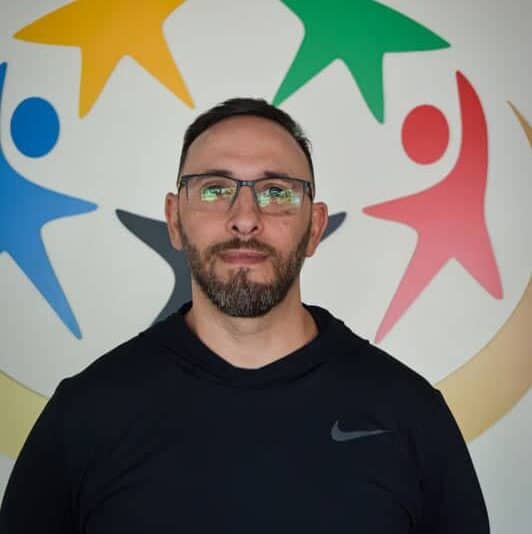
Share This Post
